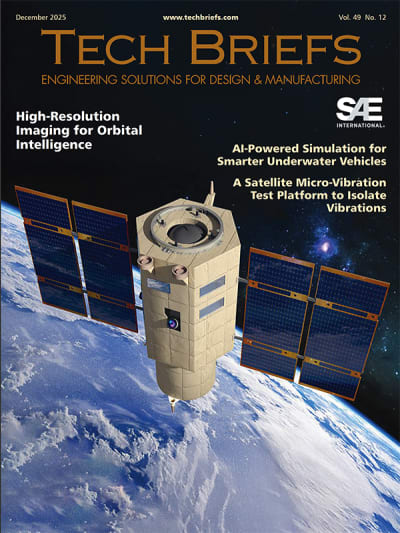
Specialized robots that can both fly and drive typically touch down on land before attempting to transform and drive away. But when the landing terrain is rough, these robots sometimes get stuck and are unable to continue operating. Now a team of Caltech engineers has developed a real-life Transformer that has the "brains" to morph in midair, allowing the dronelike robot to smoothly roll away and begin its ground operations without pause. The increased agility and robustness of such robots could be particularly useful for commercial delivery systems and robotic explorers.
The new robot, dubbed ATMO (aerially transforming morphobot), uses four thrusters to fly, but the shrouds that protect them become the system's wheels in an alternative driving configuration. The whole transformation relies on a single motor to move a central joint that lifts ATMO's thrusters up into drone mode or down into drive mode.
"We designed and built a new robotic system that is inspired by nature — by the way that animals can use their bodies in different ways to achieve different types of locomotion," said Ioannis Mandralis, a graduate student in aerospace at Caltech and lead author of the new paper. For example, birds fly and then change their body morphology to slow themselves down and avoid obstacles. "Having the ability to transform in the air unlocks a lot of possibilities for improved autonomy and robustness," Mandralis said. But midair transformation also poses challenges. Complex aerodynamic forces come into play both because the robot is close to the ground and because it is changing its shape as it morphs.
"Even though it seems simple when you watch a bird land and then run, in reality this is a problem that the aerospace industry has been struggling to deal with for probably more than 50 years," said Mory Gharib, the Hans W. Liepmann Professor of Aeronautics and Medical Engineering, director and Booth-Kresa Leadership Chair of Caltech's Center for Autonomous Systems and Technologies (CAST), and director of the Graduate Aerospace Laboratories of the California Institute of Technology (GALCIT). All flying vehicles experience complicated forces close to the ground. Think of a helicopter, as an example. As it comes in for a landing, its thrusters push lots of air downward. When that air hits the ground, some portion of it bounces back up; if the helicopter comes in too quickly, it can get sucked into a vortex formed by that reflected air, causing the vehicle to lose its lift.
In ATMO's case, the level of difficulty is even greater. Not only does the robot have to contend with complex near-ground forces, but it also has four jets that are constantly altering the extent to which they are shooting toward each other, creating additional turbulence and instability.
To better understand these complex aerodynamic forces, the researchers ran tests in CAST's drone lab. They used load cell experiments to see how changing the robot's configuration as it came in for landing affected its thrust force. They also conducted smoke visualization experiments to reveal the underlying phenomena that lead to such changes in the dynamics.
The researchers then fed those insights into the algorithm behind a new control system they created for ATMO. The system uses an advanced control method called model predictive control, which works by continuously predicting how the system will behave in the near future and adjusting its actions to stay on course.
"The control algorithm is the biggest innovation in this paper," Mandralis said. "Quadrotors use particular controllers because of how their thrusters are placed and how they fly. Here we introduce a dynamic system that hasn't been studied before. As soon as the robot starts morphing, you get different dynamic couplings — different forces interacting with one another. And the control system has to be able to respond quickly to all of that."
Transcript
00:00:04 Meet Atmo, the aerially transforming morphabot that can smoothly transition between ground and air through midair transformation. Atmo is capable of driving, engaging its thrusters to fly and land seamlessly on its wheels. This is achieved using a unified structural and actuation system that transforms the robot from quadrotor to ground mode using only one motor. We also study the
00:00:28 aerodynamics of midair transformation using smoke visualization and load cell testing. Obtaining new insights in the aerodynamics of aerial transformation. This enables us to push the limits of the maneuvers that can be achieved. We exploited the studied aerodynamics using a model predictive controller with an adaptive objective function. Our method is applicable for
00:00:50 emergency slope landings as well as quick transitions from air to ground by landing or taking off with forward velocity. Our method may also increase the fall tolerance of robots deployed on the field. When transforming on the ground, rough terrain may trap the robot. Instead, landing in ground configuration can avoid these situations, increasing robustness.
00:01:13 This work is one example of how mid-air transformation can increase the agility and robustness of robotic explorers.

